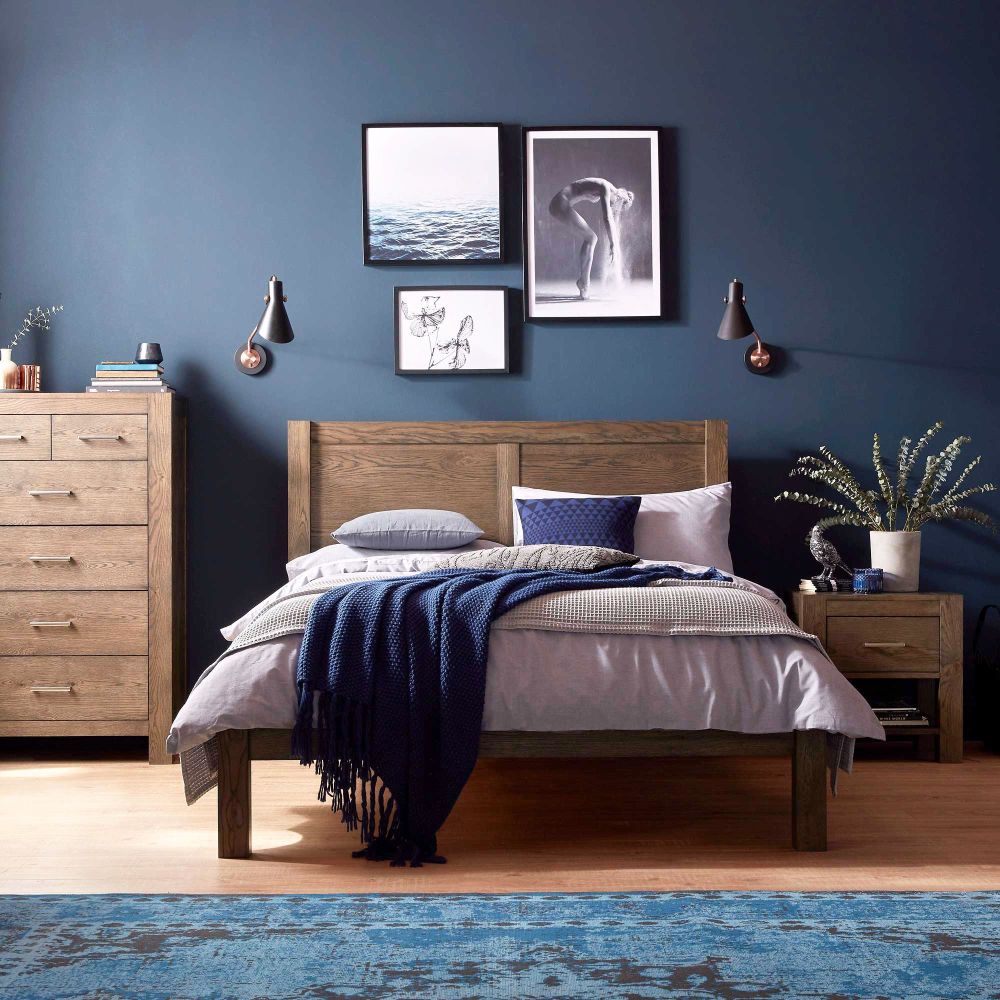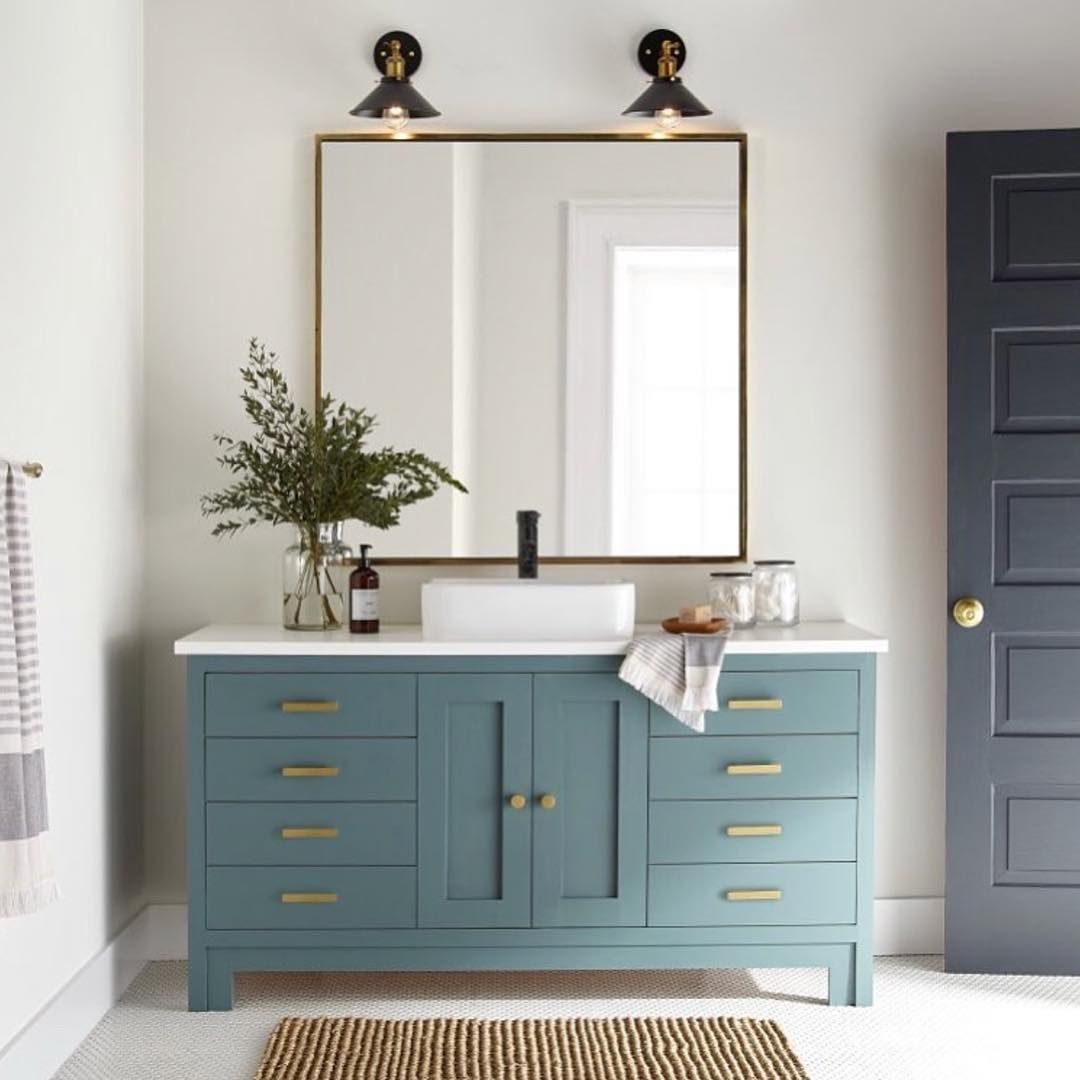Basic Guide to Finding the Best Room Colour
With so many colour combinations available and the vast architectural options in home building and remodeling today, determining a room colour or colour scheme can feel overwhelming. What colours look well together? What colours should go on the walls? What colours should go with white walls? These, and many other, room colour questions come up often. Here are some ideas for determining a room colour that works for your space, based upon the space itself and your own style preferences.

LIVING ROOM:

White living room walls with bold colour: The white-walled living room should look anything but builder-grade, and adding in plenty of bold room colour will accomplish this effortlessly. The bolder the colours you choose, the tighter you should keep your scheme so the space maintains its vibrancy of style rather than competing against itself. In this space above, you’ll notice the complementary colours of blue and orange are used for a warm, energetic hangout.{found on colincadle and jennifergreyinteriors}
Multi-coloured living room walls:

Despite the fact that three colours exist on the vertical planes in this living room, the colours themselves are muted and grey. Maintaining saturation consistency in a space like this is key for the colours to work together. Notice the use of colour “lowers” the ceiling colour down onto the walls to create a cozier, homey space. The room colour design matches low horizontal furniture lines as well.
Neutral living room walls with few pops of colour:

In this modern, straight-lined living room space with plenty of natural light and “white space,” a neutral palette of white and grey creates a perfect backdrop for pops of colour. In this instance, the fuchsia shelf background and armchairs are spread across the room, in the four corners of the space, to balance and stabilize the energy of the room colour itself.
Pale living room walls with eclectic colour:

One key to successfully incorporating eclectic anything in a space, be it accessories, colour, or overall design, is to maintain some threads of similarity and cohesion throughout the space. Aqua tones of varying intensities are scattered throughout so that, although the room colour scheme itself doesn’t feel traditional, it does feel strategic and balanced and, therefore, comfortable. Notice the layers of neutrals and neutral patterns throughout this living room, which is one way of giving the space lots of visual interest without going over the top on room colour.{found susannelsoninteriors}.
BEDROOM:

Soft bedroom walls with white accents: Cool, dusty pink walls in this bedroom match the tonality of the hardwood floor, making the floor and walls feel like a unit. The pale and/or white accessories and furnishings throughout the bedroom (such as the white paper pendant light, bedspread, nightstand table, and even the baseboards and window trim) provide a lighter, brighter touch to the space.{found on cocolapinedesign}.
Colourful multi-coloured bedroom walls:

As one of the most private rooms in one’s home, typically, the bedroom provides an excellent canvas to experiment with your true style and personality. While cascading streaks of colourful multi-colour might not feel like the right move in your living room, if the look brings you joy, why not throw it onto your bedroom wall? In a design situation such as this, however, take care to balance the accent wall with lots and lots of solid neutrality elsewhere.{found on jacinteriors}.
Single-colour bold bedroom walls with neutral furnishings:

As discussed, the bedroom is a wonderful space to use those vibrant colours that might feel intimidating in other spaces. When using a single colour in a broad sweep in the bedroom, consider making symmetry your ally for inspiring aesthetic and energetic balance. In this example, the pale ceiling colour matches that of the flooring, with bold colour sandwiched in between. The bedroom itself is fairly symmetrical in its layout, further giving structure and purpose to such an eye-catching room colour choice.{found on pagehomedesign}
Deep, rich bedroom colour with neutral furnishings:

Often, the most important element of a bedroom is the element of intimacy and relaxation. A deep, cool colour can provide just such an atmosphere. It will feel dramatic, the darker and richer you go with the room colour, so you can temper the drama with natural and neutral pieces of a mid-range tonality. This can be done without sacrificing the feeling of comfort and welcome within the space by keeping silhouettes and materials basic and relatively monochromatic.
BATHROOM:
White Bathroom with Subtle Colour Accents:

An all-white bathroom can feel clean, for sure, but it can also feel sterile and commercial and cold. A few tweaks in room colour can produce a bathroom that is still clean and fresh but without the impersonality. A pale colour on the walls (or part of the walls, such as above a chair rail) provides some warmth, and coordinating hardware on the vanity help to carry that friendliness through. If possible, consider incorporating a similar tone in places such as the shower walls, shower floor, rug, towels, or other small accessories to give the space a cohesive room colour scheme.{found heritageconstructionmn}.
Neutral walls with colourful bathroom vanity:

For the modern bathroom, white walls seem to be the colour of choice quite often. Consider adding in some personality in the form of room colour on a single piece in the bathroom, such as the vanity.
Monochromatic bathroom with bold colour:

Not everyone loves a cookie-cutter neutral bathroom. For some, the bathroom is the place where the day starts. It’s a wake-up call, an energizer, in the bathroom, so the space should reflect such energy. Vibrant green apple walls and accessories are punctuated by beige and white to create a room colour that’s completely refreshing and energizing.{found on nxgstudio}.
Mediterranean bathroom with loads of colour:

A colourful bathroom needn’t feel juvenile, as evidenced by this gorgeous Tuscan style bathroom. The beige tile walk-in shower all but disappears with its greenish tinted glass surround. Furniture-like cabinetry and other furnishings make the space feel like a home, as does the warm room colour of deep yellow walls and maroon trim.{found on justbetter}.
KITCHEN:

Multi-coloured kitchen with wood floor: For the mid-sized kitchen whose owner loves colour, you can get away with incorporating multiple colours into the space when it’s balanced by plenty of neutral tones. In this instance, blonde wood panels coat the ceiling and upper cabinets and medium-toned wood flooring provide enough contrast with and neutralizing of the energetic colours elsewhere, like sky blue glass subway tiles, matte purple lowers, recycled glass countertops, and lime green cutout surface.
Blue kitchen room colour with metal accents:

Mixed muted blues, including a matte navy on the flat-surface cabinets and various grey-aqua tints on the random geometric backsplash, work together with industrial neutrals and mixed metals to create a modern twist on traditional kitchen room colour.
Kitchen backsplash creating the room colour:

For many kitchens, walls are in short supply because they’re covered in cabinetry. The primary source of colour for these kitchens comes from the cabinet faces themselves and the kitchen’s backsplash. Capitalize on the visual prominence of the vertical backsplash by using this plane to bring colour into an otherwise neutral kitchen colour scheme. Bold aqua, for example, gives this sleek combo kitchen/dining room definition and energy.
DINING ROOM:

Rich jewel tone dining room walls with dark trim: The dining room can be a perfect space for experimenting with bolder, richer colour than what you might put elsewhere in the home. A single colour of a rich jewel hue makes a dining room feel luxurious and warm; darker trim components such as navy, charcoal, or black, amp up the sophistication as well. Keep other room colours (e.g., dining chairs) similar in saturation to the jewel tones to blend the space.
Warm two-tone walls in open concept dining room:

Spanish- and Tuscan-style homes often involve warm room colours, and in this clean-lined open concept space, that is certainly the case. You can designate functional space boundaries in an open concept floor plan with colour – in this case, red for the kitchen and dining room, and a buttery yellow for the living space provide two-tone definition without jarring separation. Neutral flooring and furnishings keep the room colour on track without competition.
White dining room walls with colourful accents:

Particularly in smaller and/or less formal dining spaces, this room colour scheme does wonders for whetting the visual palette. White walls and neutral flooring, combined with wood tones, set a wonderfully neutral backdrop that’s perfect for a rainbow of bold colours in the dining room.
Neutral dining room with colour from adjoining rooms:

In today’s popular multi-purpose rooms, the dining room and kitchen lines are often blurred or altogether nonexistent. In this case, if the dining room colour is kept neutral, consider allowing a pop of colour to peek through from an adjacent space, such as the kitchen backsplash here.{found on dannybroearchitect}.
Regardless of the room you’re styling, there are plenty of ways to choose the perfect room colour and colour palette that enhances style, works with the existing architecture, and creates a space that easily becomes everyone’s favourite.
The post Basic Guide to Finding the Best Room Colour appeared first on Home Decorating Trends – Homedit.





